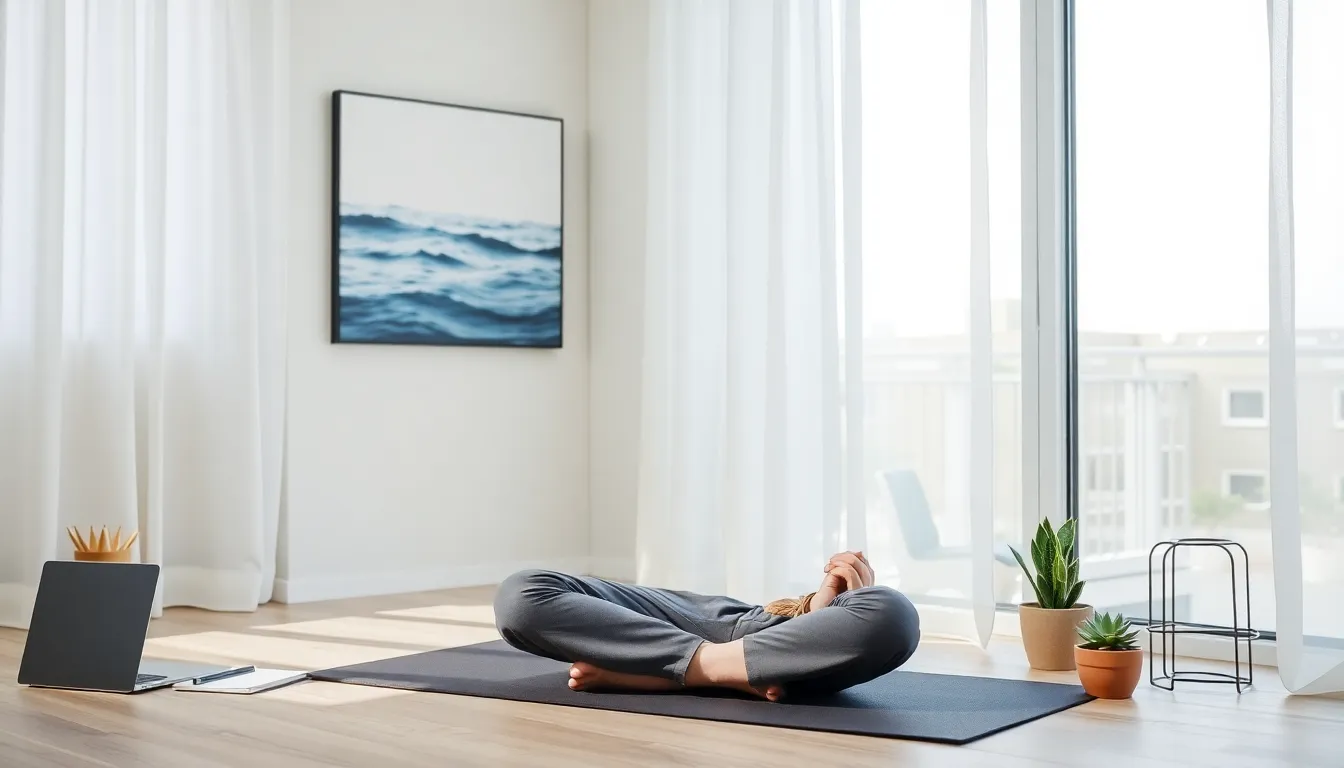Table of Contents
ToggleImagine waking up each day feeling lighter, more centered, and capable of handling whatever life throws your way. Sounds appealing, right? Mindfulness activities for adults can work wonders in reducing stress and enhancing overall well-being, and guess what? They’re more accessible than you’d think. Whether one is seeking refuge from frenetic city life or simply aiming to quiet a racing mind, these activities offer a ticket to tranquility. Let’s jump into the intriguing realm of mindfulness, complete with actionable tips you can incorporate right away.
What Is Mindfulness?

Mindfulness is the practice of being fully present in the moment. It involves observing thoughts, emotions, and surroundings with an open, non-judgmental attitude. Unlike meditation, mindfulness can be practiced at any moment, while sipping a cup of coffee or even during a mundane commute. Essentially, it’s a way of tuning in to the present, rather than being lost in regrets about the past or anxieties about the future. By engaging in this practice, individuals learn to respond to situations with clarity rather than reacting impulsively, paving the way for a more thoughtful life.
Benefits of Mindfulness for Adults
The benefits of mindfulness for adults are both numerous and profound. Studies have shown that regular mindfulness practice can reduce stress levels, improve emotional regulation, and even enhance cognitive functions, such as focus and memory. For those grappling with anxiety or depression, mindfulness can act as a powerful ally, offering tools to navigate difficult emotions. Plus to emotional benefits, individuals may experience physical health improvements, including lower blood pressure and enhanced immune response. In essence, embracing mindfulness can transform how one interacts with the world, leading to a greater sense of peace and satisfaction.
Essential Mindfulness Activities
For anyone looking to jumpstart their mindfulness journey, here are some essential activities to consider:
1. Mindful Breathing Techniques
Mindful breathing is a simple yet powerful way to anchor oneself in the present moment. Practitioners can start by taking a deep breath in through the nose, holding it for a brief second, and then exhaling slowly through the mouth. Focusing solely on the breath not only calms the mind but also allows for clearer thought processes.
2. Guided Imagery and Visualization
Guided imagery involves using imagination to create mental images that promote relaxation and peak emotional states. One might find a quiet space, close their eyes, and visualize a serene landscape or a peaceful moment. This not only nurtures the mind but also nourishes the spirit.
3. Body Scan Meditation
This technique invites individuals to mentally scan their bodies from head to toe. Focusing to each part, practitioners can identify areas of tension and consciously relax them. This activity enhances body awareness and promotes an overall sense of calm.
4. Journaling for Mindfulness
Journaling offers a powerful reflection tool. Taking time to jot down thoughts and feelings can lead to insights that help clarify one’s emotions. Mindful journaling invites individuals to write without judgment and simply let their thoughts flow, creating a safe space for understanding and personal growth.
5. Nature Walks and Observations
Walking in nature serves a dual purpose: it provides physical exercise and the opportunity to practice mindfulness. Observing the colors of the leaves, the sounds of birds, and the feeling of wind against the skin brings one back to the here and now. Nature has an incredible way of grounding us.
How To Create A Mindfulness Routine
Establishing a mindfulness routine doesn’t require a substantial time commitment. In fact, small, consistent efforts can yield significant results. First, individuals should choose a time that fits conveniently into their schedules, mornings can be great for setting intentions, while evenings can be allocated for reflection. Next, begin with short periods of practice, gradually increasing the duration as comfort levels rise.
It’s beneficial to create a dedicated space for mindfulness activities. This area should feel tranquil and inviting, free from distractions. Also, employing tools like mindfulness apps, journals, or even guided podcasts can enhance the experience and provide structure. The key is consistency: even just five minutes a day can gradually cultivate a more mindful life.
Tips for Incorporating Mindfulness into Daily Life
Mindfulness doesn’t have to be confined to formal practices. It can easily be woven into everyday life. Here are some practical tips to help foster mindfulness seamlessly:
- Start Small: Introduce mindful moments into regular activities, such as chewing food slowly and savoring flavors or focusing on the sound of water while washing hands.
- Set Reminders: Use phone alarms or sticky notes with reminders like “breathe” or “be present” to encourage mindfulness during the day.
- Limit Multitasking: Engaging in one task at a time not only enhances focus but promotes a better quality of work and reduces overwhelm.
- Practice Gratitude: Take a moment each day to reflect on things to be grateful for. This simple practice shifts focus from what’s lacking to appreciating the present moment.
- End the Day with Reflection: Spend time in the evening to reflect on the day’s experiences. This helps maintain awareness and prepares the mind for a restful sleep.







